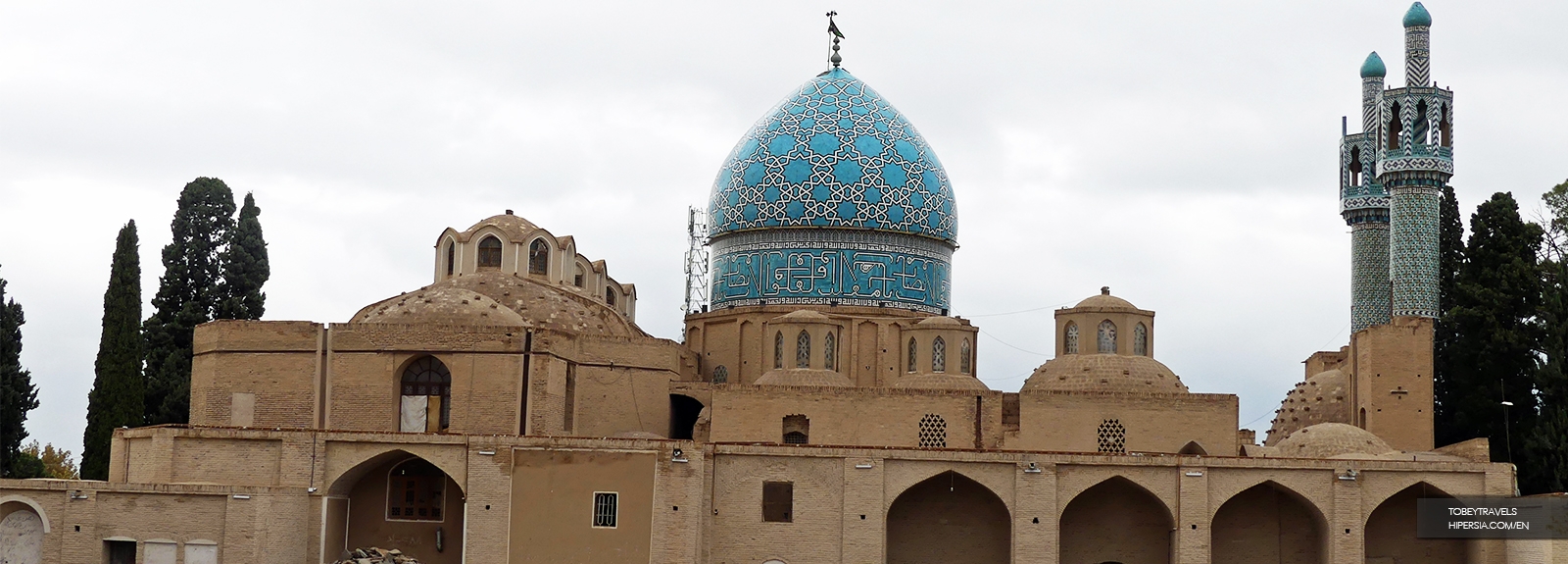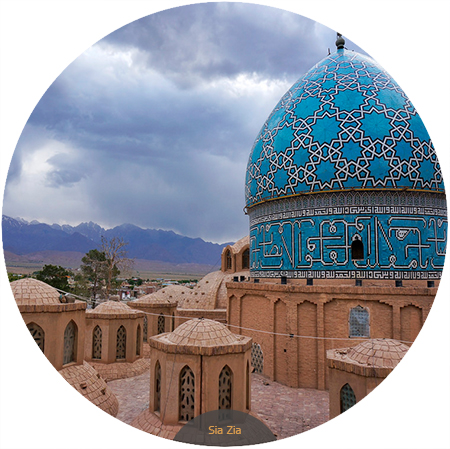



On the corner of Mahan city, there is a turquoise dome that one of the most famous Iranian poets and mystics buried in this tomb. Shah Nematullah Vali was born in Kohnan, Kerman from 730 to 731 AH.
Come, my heart and my soul are filled with love for the dervishes.
Come, for the king of the world is a beggar compared with the dervishes.
In the corner of Mahan city, there is a dome of turquoise paints. One of the most famous Iranian poets and mystics buried in this tomb. Shah Nematullah Vali was born in Kohnan, Kerman from 730 to 731 AH. He created a new path in Sufism and influenced followers of another credo. The Nematullah dynasty is the name of this credo which is one of the most famous branches of Sufism in the present era. Shah Nematullah Vali, in one of the years from 832 to 834 AH, dead in Mahan and was buried there. The original structure of this mausoleum was by the king of Deccan, India, named Ahmad Shah Decani, one of the followers of Shah Nematullah Vali and had a specific interest in Persian culture and literature. The original monument of this tomb was only one of the buildings located in a large garden. A rectangular space over which a dome with beautiful and turquoise clinkers is shining. Many developments of this collection occurred during the Qajar period. After the Kerman’s earthquake of 1360, part of the upper part of the dome was destroyed.

The shrine has 3 yards with an area of 32,000 square meters. The shrine of Shah Nematullah Vali, with courtyards and porticos around 6000 square meters, has a spectacular look. This complex has two entry doors, small and large cells, four tiled minarets, two porticos called Modir al-Molki and Shah Abbasi, and four yards called Atabaki, Vakil al-Molki, Mir Damad, and Hussainiya.
The mystery of the number 11 in the tomb architecture
The tomb's dome is divided into 11 equal parts that This is a very unusual subject because domes are fundamentally separated into paired parts, and it is very challenging to figure out correctly the same number.

The beautiful tile with Persian patterns originally appeared on the west side door of the tomb, with Azure colors, turquoise, white, and gold. There is a large Kashkul at the entrance of the shrine, which is a mixture of metals such as copper and brass, and Poems in the definition of Ahl al-Bayt and There are "Yahu" and "Ya Ali" on it. People make their vows in the Kashkul. The entrance doors are 5 sets that were built in India, and they were brought to Mahan. Elements of ivory are used in these doors. At the beginning of the door of Shah Vali's tomb, there is a valuable inscription that is the sign of the devotion of Sultan Ahmad Shah and his son to this mystic. From this section, they referred to as Mohammad Shahi.
In the southwest shrine, there is a very short room with a small arch, which says that once upon a time, this room was Shah Nimatullah Wali's Chelleh Khaneh. It is considered to be the oldest part of the collection and has a roof of the Sufi hat with 12 cracks.

Poems were written about the character of Imam Ali (AS). It usually closes the door of Chelleh Khane; you can ask the curator to open the door for you.

The four tiled minarets contain Shia inscriptions. In the upper part of each side of the minaret, the word "Allah" can be seen, and the first part “La Ilaha Allah" repeated below it. The word "Ali" has also been written four times as a convoluted pattern. Repeating this method in all aroundthe octagonal aspect has a striking effect.

The caravanserai is located next to the western side, which is related to the Qajar era and is now half-ruined.
In the lower part of the entrance corridor is a museum in which valuable objects associated with the culture of Sufism are displayed. The museum's building is known as the Amirieh mansion or door and is used to build gypsum and brick. Among the works of this museum are the following:
Kashkuls adorned with roles: These works are the most prominent sign of Dervishes. These are small dishes that the dervishes and Sufis took with them and hung on their shoulders with a chain.

Axes carved: The little axes carried the dervishes.
Pateh needlework: One of the most beautiful and most valuable of them is the Pateh that has covered the grave of Shah Nematullah Wali.
Quran pages: The two pages of a Qur'an written in the Kufic script and its writing style show its dating over eight hundred years.
On the southwest side of the entrance hall and in the courtyard of the Vakil al-Molki, there is the tomb of Hasan Ali Khan Garroosy. He was a famous person in the Qajar era and was also known for politics, and was a valuable artist, particularly in calligraphy.
We suggest that you go to the shrine of Shah Nematollah in the days of Sesen (late March to early May, mid-September, and mid-December). If you want to see a beautiful view of Shah Nematullah, it is better to go at sunset.
You have to get to the Kerman province by public transport, like a plane, bus, or car, then go to Mahan. The shrine of Shah Nematullah Wali is located next to Shah Nematullah Park.






“Oh! Squander not this breath that Heaven hath lent thee, Nor make too sure another breath to borrow!’” Khayam